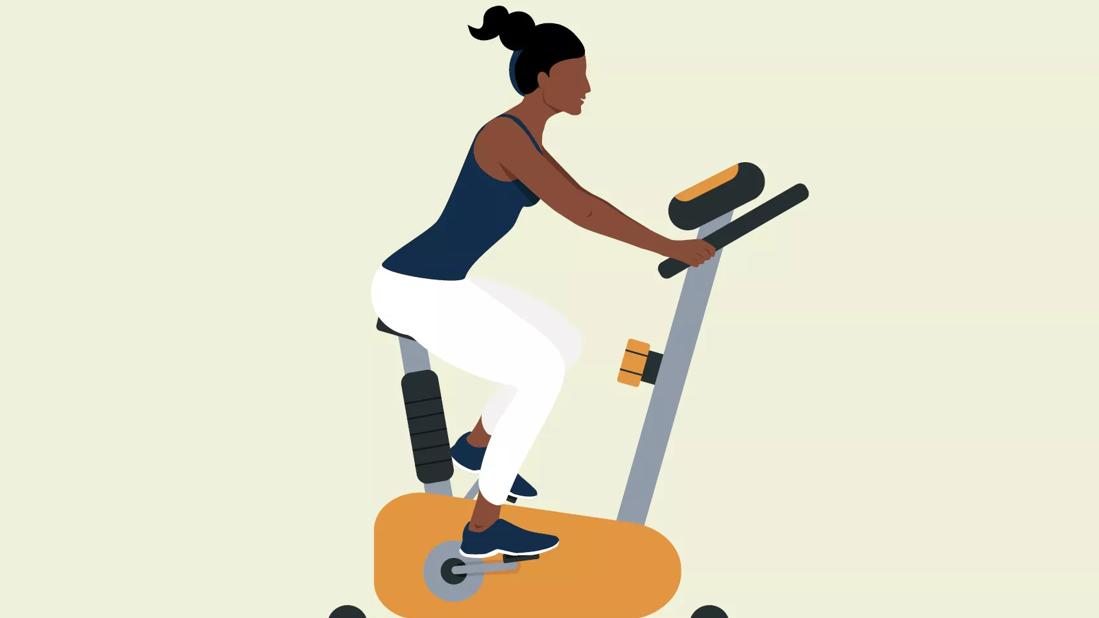
“Move your body.” That seems to be the general health advice when it comes to staying physically healthy. And there are many ways to do it. If you were a mermaid in another life, maybe you enjoy a challenging swim across the pool. If you’re a dancer at heart, perhaps you like a good Zumba class to start your day.
Cleveland Clinic is a non-profit academic medical center. Advertising on our site helps support our mission. We do not endorse non-Cleveland Clinic products or services. Policy
Or maybe, you’re craving two wheels, two pedals and an endless road ahead.
Cycling is more than just a popular hobby. Whether you’re on a dusty trail or in your favorite trendy cycling studio, there are many ways to enjoy and benefit from cycling.
Physical therapist Jaclyn Kubiak, PT, DPT, explains the great health benefits of cycling and how to start your routine today.
Cycling is often recommended as a low-impact and engaging workout for people of all ages. It’s an aerobic exercise and helps strengthen your heart, blood vessels and lungs.
Other aerobic exercises that have similar health benefits include:
In general, the recommendation is that adults should get about 150 minutes of aerobic exercise each week. Cycling is a good example of this because, according to Dr. Kubiak, it’s a perfect workout for those just starting an exercise routine.
“One of the major benefits of cycling is that it’s low-impact,” says Dr. Kubiak. She also points out that you can incorporate cycling into your daily life. A quick bike to work or the grocery store can contribute to your weekly workout goal.
Here are some great health benefits of cycling:
Like other aerobic exercises, cycling can build up your muscular strength and endurance. According to Dr. Kubiak, research has shown that indoor cycling helps build muscle in various parts of your lower body.
“Your hamstrings are being activated at about 17%, your quadriceps at 17% and the glutes are at 15 to 17%,” explains Dr. Kubiak.
Cycling helps with loosening your quadriceps, hamstrings, calves and hips. This way, your lower body is becoming more flexible over time. Plus, your core and arm muscles get a good workout.
Cycling can also improve balance. As you have to be in a specific position while riding an indoor or outdoor bike, it helps train your body to keep a better posture. If you’re wanting to improve your coordination, cycling can help stabilize your core.
“If you think about it, when you’re on the bike, you have to find that center of balance to stay upright,” says Dr. Kubiak.
Another benefit of indoor cycling is how easily you can incorporate other workouts into your cycling session. So, once you get really comfortable with cycling, you can start working out more than just your legs at the same time.
“You’re using your big leg muscles to cycle, which is already a huge benefit,” notes Dr. Kubiak. “But you can also do it in combination with strength training, or you can do it without.” This might be either using a pair of light hand weights while cycling or even doing different arm exercises. This way, you’re able to work out other parts of your body.
Cycling can also be good for your mind. For one, it helps create positive endorphins in your brain.
“It’s been shown that cycling reduces anxiety and depression,” says Dr. Kubiak. “Mainly, because you can make it fun. You get the added benefit of being outdoors or you can go do it with friends.”
And, if you’re just starting out, customizing your cycling experience makes it a more enjoyable workout.
“You can change the intensity for it yourself,” he adds. “It can be as easy as you want or as hard and enduring as you want.”
As cycling is a relatively low-impact exercise, it’s an ideal form of exercise if you have arthritis or osteoarthritis. This is because cycling doesn’t put a lot of stress on your joints.
Dr. Kubiak notes again that staying upright during cycling helps engage your core. When you engage your core, you begin to flatten your back, which then decreases back pain and causes less impact on your joints.
“When you’re moving your legs around and getting those joints moving, it then increases the joint fluid and increases blood supply to that area,” he explains. “You’re increasing all those things at the same time. Then that’s helping lubricate the joint, decreasing the pain that you’re having with arthritis.”